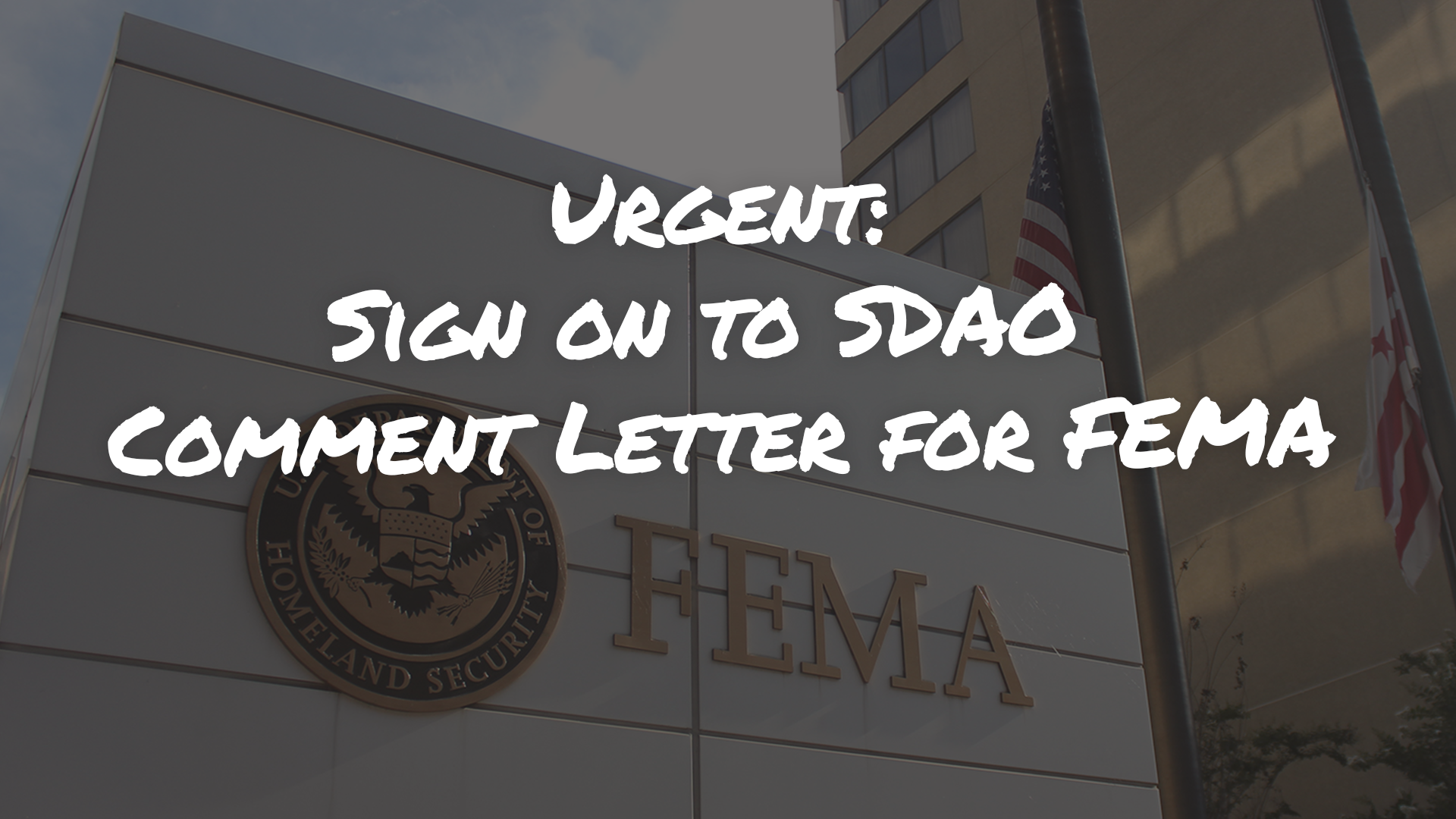SDAO Comment Letter for FEMA

CLICK HERE TO SIGN ON TO SDAO COMMENT LETTER FOR FEMA
____________________________________________
Ms. Science Kilner
Regional Environmental Officer
FEMA Region 10
130 228th Street SW
Bothell, WA 98021
FEMA-R10-ESAcomments@fema.dhs.gov
Re: Scoping Comment regarding FEMA Docket 2023-0007
FEMA’s EIS regarding FEMA’s Plan for NFIP-ESA Integration in Oregon
Dear Ms. Kilner,
I am writing on behalf of the Special Districts Association of Oregon and the below signed special districts to provide comments regarding the scope of FEMA’s environmental review of its plan for NFIP-ESA Integration in Oregon. I believe that FEMA’s implementation of this plan will have significant consequences for many communities and property owners in Oregon.
The Special Districts Association of Oregon represents nearly 1,000 Oregon special districts which are local governments providing specific services such as domestic water, sanitation, fire protection, ports, hospitals, and parks. Many of these districts provide essential government functions and are located in or near high hazard flood zones.
SDAO is concerned that FEMA’s plan for integrating the NFIP and ESA in Oregon is not sufficiently definite to enable meaningful environmental review. To date, the only available information is FEMA’s Draft Implementation Plan dated October 2021. That draft plan includes many gaps and ambiguities regarding what changes FEMA intends to require NFIP-participating jurisdictions to implement. Until all the implementation documents and guidance are available in at least a complete draft form, it will be difficult and, in some cases, not possible for our member special districts to comment regarding the scope or effect of FEMA’s proposed action.
Assuming FEMA proceeds with environmental review despite this concern, I request that FEMA consider the following as part of its EIS:
- How implementation of FEMA’s plan will affect, among other things:
- The ability of water and sanitation facilities to maintain and develop their treatment plants and water intake and outtake facilities.
- The ability of port districts to develop and maintain their harbors and dredge their channels.
- The ability for fire/EMS districts and health districts to continue providing critical lifesaving services to Oregon’s coastal communities.
- The ability for soil and water conservation districts to continue habitat restoration projects.
- When/how local jurisdictions will determine which development projects within the floodplain, including the floodway, may proceed and with what limitations/restrictions.
- When/how local jurisdictions will determine whether a development project may use mitigation to offset its impacts.
- The types and availability of mitigation for floodplain development impacts. It is important that FEMA not assume that mitigation is available and must evaluate the availability of mitigation for particular projects and in particular communities.
- The degree of benefit for ESA listed species and habitat from implementation of the proposed new restrictions in various floodplain areas – e.g., in urban areas, in rural areas, in recreational areas, on forests and farms, in riverine and coastal floodplains, and in floodplain areas nearer and further from riparian areas.
- The socioeconomic impacts of implementation of FEMA’s implementation plan. This should include:
- Impacts to floodplain property owners.
- Impacts to value and prices of property inside and outside the floodplain.
- Impacts to local jurisdictions’ tax revenue and the corresponding effects on local government spending.
- Other direct and indirect socioeconomic impacts from implementation of FEMA’s NFIP-ESA integration.
- The consistency or inconsistency of FEMA’s implementation plan with existing Oregon laws and policies, including Measure 49.
- The consistency or inconsistency of FEMA’s implementation plan with each NFIP-participating jurisdiction’s existing land use plans and policies, including existing zoning, comprehensive plans, housing goals, hazard management plans, and others.
- The cumulative impacts on development of compliance with other existing federal, state and local requirements that also apply and how FEMA intends to avoid duplicative or overlapping requirements.
- How existing and potential future habitat benefit projects will be considered as part of implementation of FEMA’s plan.
- The consequences for local communities that choose not to participate in the NFIP once FEMA begins enforcing its final implementation plan.
Thank you for your consideration of the above areas of concern. Implementation of this plan in its current draft will have a substantial effect on many of Oregon’s local governments and the communities they serve.
Sincerely,
Frank Stratton
SDAO Executive Director
